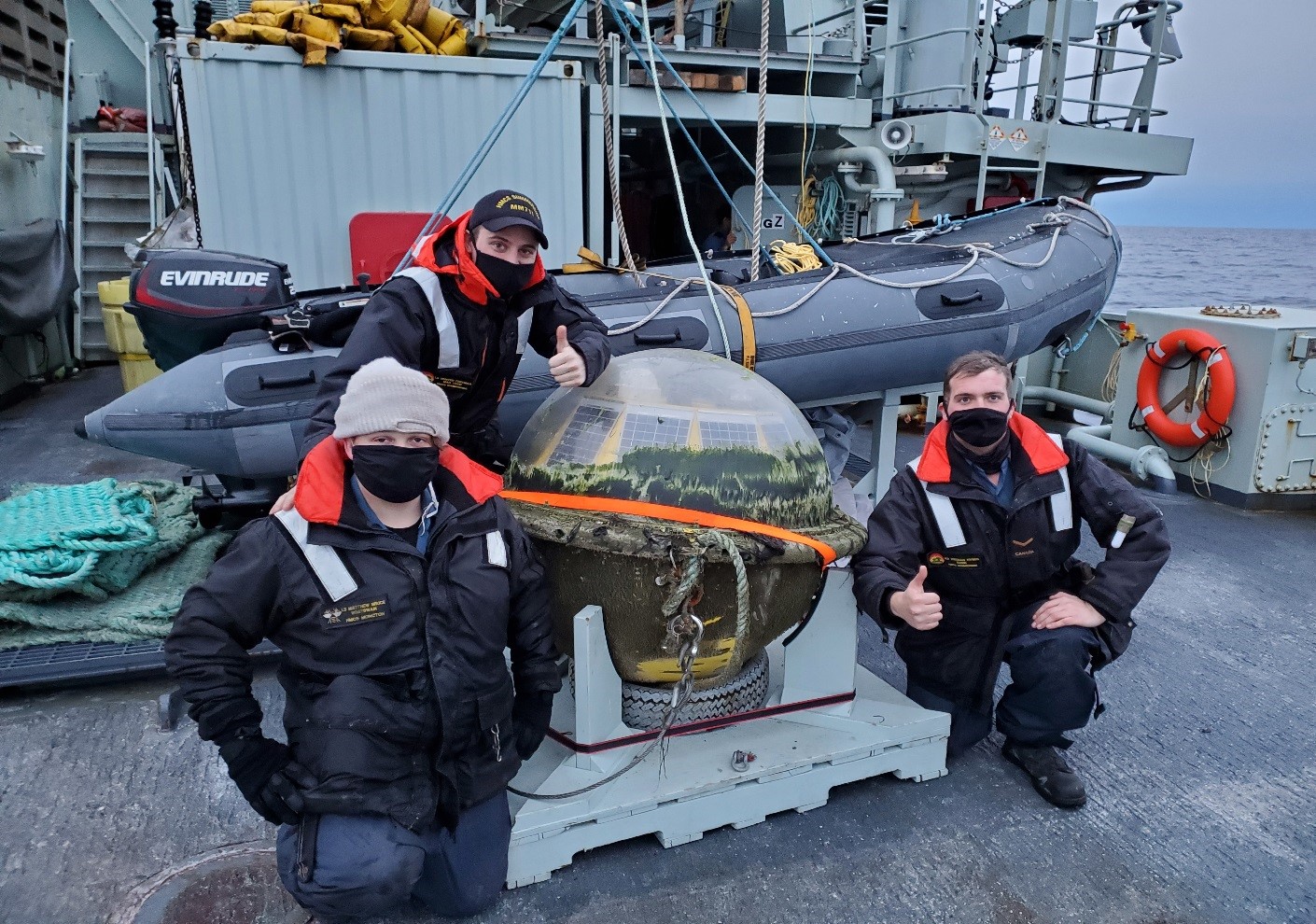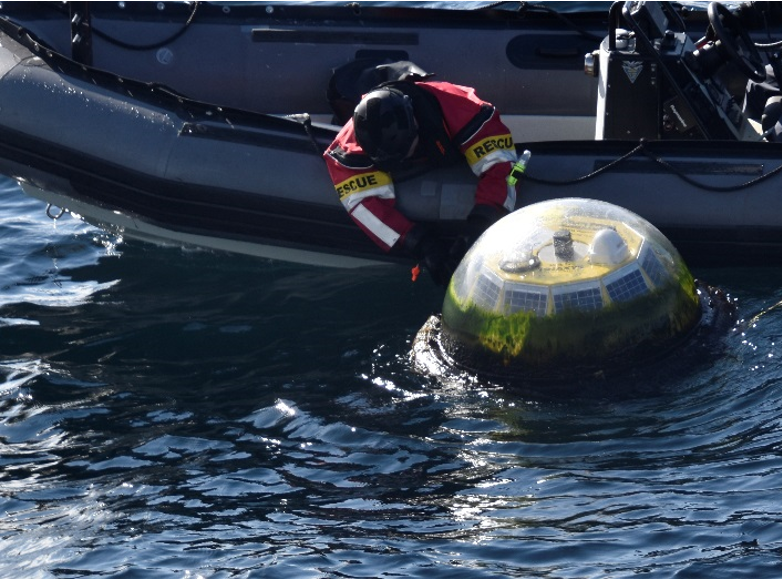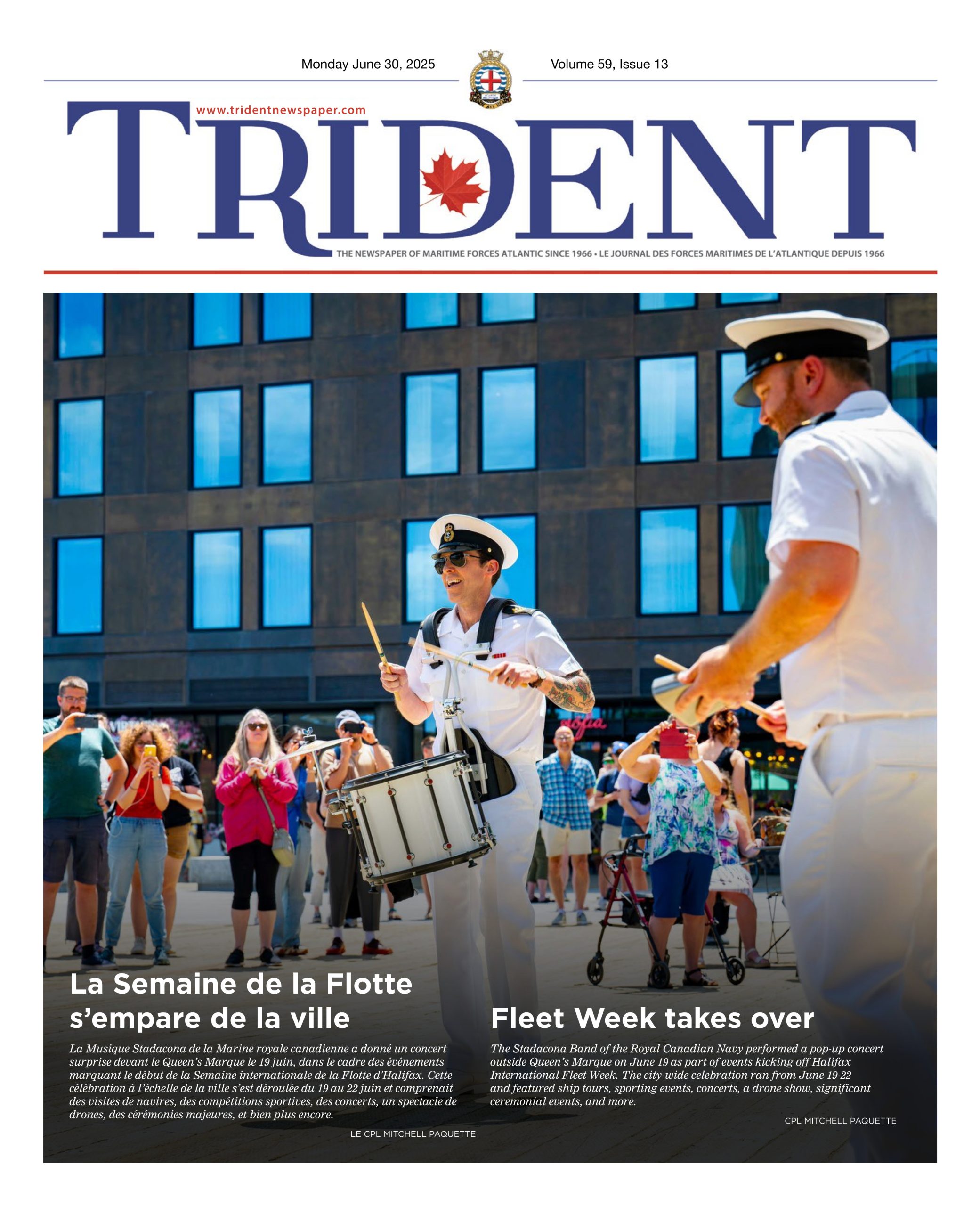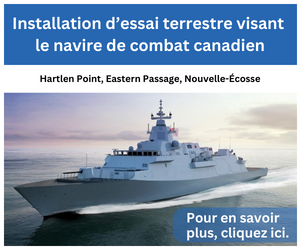
S1 POLLITT, HMCS SUMMERSIDE
Summerside reins in runaway rider buoy
By Lt(N) Dan Bannerman,
NCSM Summerside
On January 19, 2021, HMCS Summerside was tasked as Ready Duty Ship (RDS) to recover a TRIAXYS directional wave buoy that had broken free of its mooring and was drifting to sea. As a result, the 500-lb buoy posed a threat to the safety of navigation off the coast of Nova Scotia and needed to be recovered quickly.

S1 POLLITT, HMCS SUMMERSIDE
Summerside slipped its berth at HMC Dockyard 8 p.m. on January 19 and proceeded to sea, making way towards the buoy’s last known location. The buoy was still functioning and sending regular updates, which made the task of finding it much easier. After a 14-hour overnight transit, Summerside located the buoy off the southeast coast of Nova Scotia. The ship’s Rigid Hull Inflatable Boat (RHIB) was launched and the sweepdeck was set up to recover the buoy. The RHIB crew – composed of S1 Bruce, S1 Freeman, and S2 Hynes – proceeded to the buoy and attached the bridle necessary for the crane to hook up. Thankfully, the seas were much calmer than some of the previous recorded heights the buoy had encountered through 433 days at sea.
The RHIB towed the buoy alongside Summerside and, using the ship’s crane, brought it safely onboard. The RHIB was then recovered and Summerside returned to operating areas near Halifax to conduct planned operations with HMCS Moncton.
The directional wave buoy is produced by AXYS Technologies, deployed and operated by DRDC, and was moored off the coast to collect wave statistics. This data includes wave height, period, acceleration and direction, and can be used for operational purposes, research and development initiatives, and climate studies. The TRIAXYS buoys can store up to 32 gigabytes of data, which represent years of raw and processed information, inside a casing composed primarily of stainless-steel alloy.
Under normal circumstances, these buoys are inspected every six months to one year to confirm the integrity of the anchor fittings, but due to the ongoing COVID-19 pandemic, the regular inspection had to be delayed in order to ensure safety of the inspecting team. This particular buoy had been deployed for 433 days, which is the longest DRDC has trialed. During that time, it had recorded an impressive 16.4 metre peak wave height during tropical storm Teddy on September 22, 2020. Once returned to the DRDC laboratories, they review the buoy’s information and the state it was in to learn how to improve for future deployments. One such improvement planned is the addition of an on-board Automatic Identification System (AIS) beacon to more precisely alert shipping to the presence of the buoy.
Summerside returned to Dockyard on January 22 and landed the wave buoy. This tasking was a great opportunity for Summerside to demonstrate its ability and readiness to rapidly deploy in the event of an emergency or urgent requirement. Summerside’s Commanding Officer, LCdr Jeffrey Anderson, noted that he was “very impressed with how quickly and professionally the team got ready, adapted to a new situation, and successfully completed our tasking.”
Luckily, RDS taskings are rare. However, the Royal Canadian Navy always maintains an RDS able to respond to a multitude of events, simple or complex, in order to support Canada’s interests at home and abroad. Be sure to follow the ship’s adventures on its official Facebook page, and on Twitter with #HMCSSUMMERSIDE and @SummersideCO.





